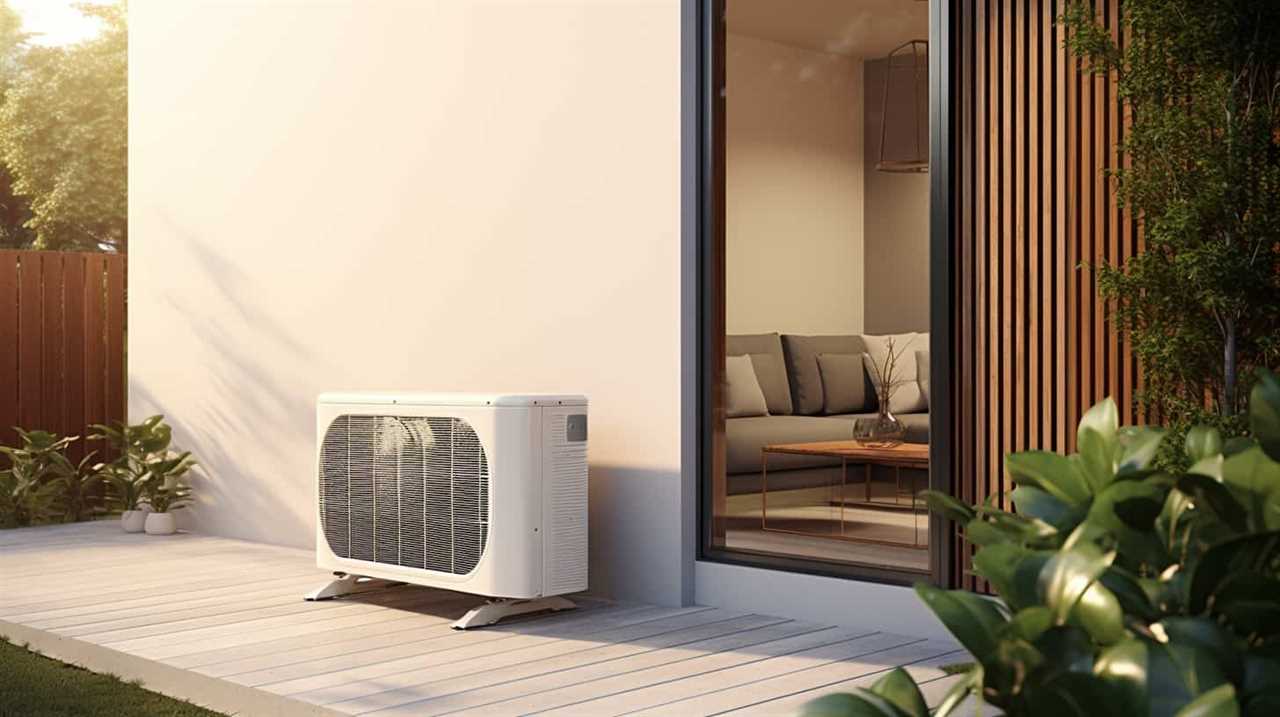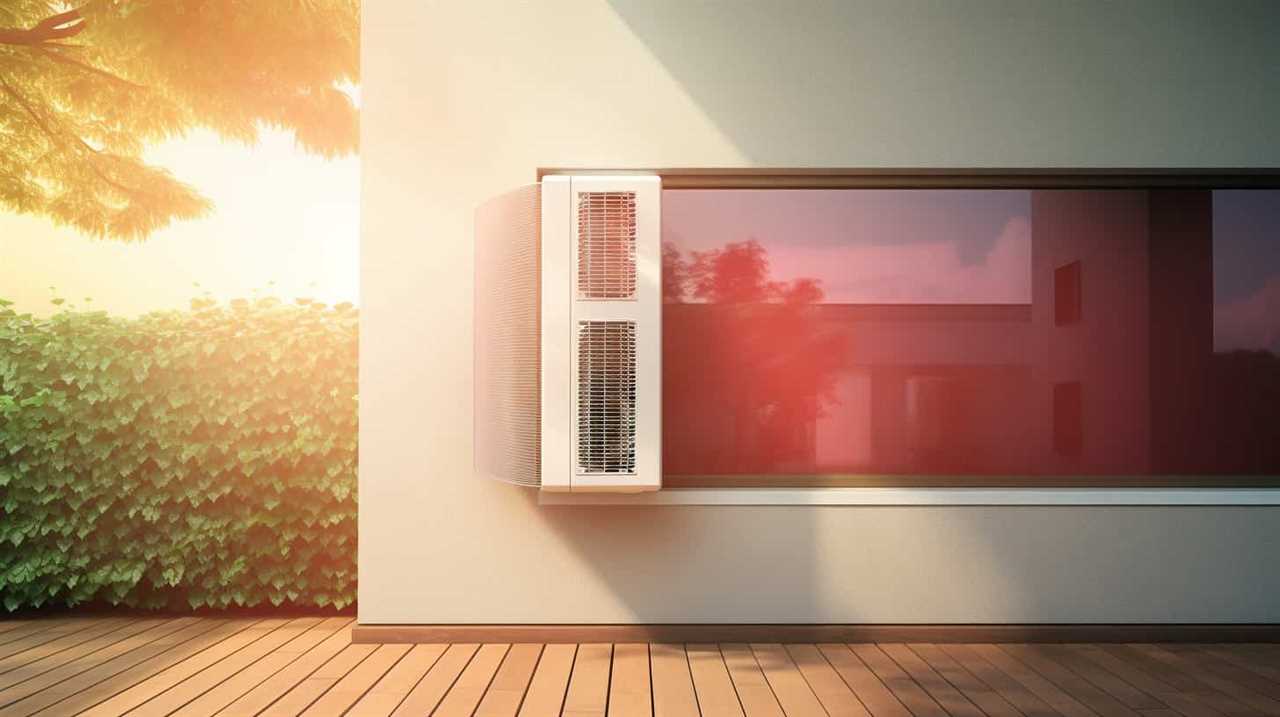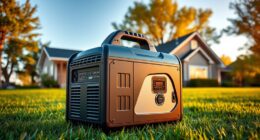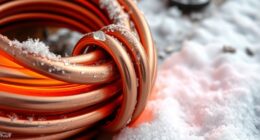
Are you prepared to optimize energy efficiency and cut costs on your heat pump system? Search no more! We have the perfect checklist for you.
With our expert tips and tricks, we’ll guide you through system sizing, insulation, heat pump selection, thermostat settings, and maintenance. By following our recommendations, you can ensure optimal performance and comfort in your home while reducing your carbon footprint.
Let’s get started on this energy-saving journey together!
Key Takeaways
- Proper system sizing and load calculation are crucial for optimal performance and energy efficiency.
- Proper insulation and air sealing are important to reduce heat loss or gain and ensure an airtight system.
- Selecting an energy-efficient heat pump with high SEER and HSPF ratings and variable speed compressors is recommended.
- Optimal thermostat settings and programming, along with regular maintenance, are essential for energy savings and system longevity.
System Sizing and Load Calculation
First, we need to determine the appropriate system size and load calculation for our heat pump. Proper system sizing is crucial for optimal performance and energy efficiency. To begin, we must consider the size and layout of the space to be conditioned, as well as factors such as insulation levels and the number of occupants.
Conducting a thorough load calculation helps us accurately assess the heating and cooling requirements of the space. This calculation takes into account various factors, including the climate, orientation, and occupancy patterns.
Additionally, it’s essential to incorporate ductwork installation into the system sizing process. Properly designed and installed ductwork ensures efficient airflow, minimizing energy loss and maximizing heat pump efficiency.
Proper Insulation and Air Sealing
How can we ensure proper insulation and air sealing for our heat pump system?
Proper insulation effectiveness and air sealing are crucial to maximize the energy efficiency and performance of a heat pump system. Insulation effectiveness refers to the ability of the insulation material to resist heat flow, thereby reducing heat loss or gain.

It’s important to choose insulation materials with high R-values and proper installation techniques to minimize thermal bridging. Additionally, air leakage can significantly impact the system’s efficiency. Sealing air leaks in the building envelope, such as gaps around windows, doors, and ductwork, can prevent unwanted air exchange and improve overall energy efficiency.
Conducting a thorough inspection and using appropriate sealing materials will help ensure a well-insulated and airtight heat pump system, leading to increased comfort and energy savings for the end user.
Energy-Efficient Heat Pump Selection
When choosing an energy-efficient heat pump, we should consider factors such as the unit’s size, efficiency rating, and compatibility with our heating and cooling needs. Energy efficient heat pump technology has made significant advancements in recent years, offering cost-effective installation options that can help us save on energy bills while reducing our carbon footprint. To assist in the selection process, we have provided a table below outlining key considerations when choosing an energy-efficient heat pump:
| Factors to Consider | Description |
|---|---|
| Size | Choosing the right-sized heat pump ensures optimal performance and energy efficiency. An oversized unit may cycle on and off frequently, while an undersized unit may struggle to meet heating or cooling demands. |
| Efficiency Rating | Look for heat pumps with high Seasonal Energy Efficiency Ratio (SEER) and Heating Season Performance Factor (HSPF) ratings. Higher ratings indicate greater energy efficiency. |
| Heating and Cooling Needs | Consider the climate in your region and your specific heating and cooling requirements. For example, if you live in a colder climate, a heat pump with a higher heating capacity may be necessary. |
Optimal Thermostat Settings and Programming
To achieve optimal energy efficiency, we should program and set our thermostat settings based on our daily schedule and the times we’re typically away from home. By doing so, we can ensure that our heat pump operates at the most energy-saving temperature settings when we don’t need as much heating or cooling.

Here are some thermostat programming tips to help us save energy and reduce our utility bills.
First, we should set the temperature lower during the winter and higher during the summer when we’re away from home or asleep. This can be achieved by using programmable thermostats that allow us to schedule temperature changes throughout the day.
Additionally, we can use the ‘hold’ or ‘vacation’ mode when we’re away for extended periods to maintain energy-saving temperature settings.
Regular Maintenance and System Upkeep
In order to ensure the optimal performance and efficiency of our heat pump system, we must regularly maintain and upkeep it. A well-planned maintenance schedule is crucial for the longevity of the system and to avoid any unexpected breakdowns.

One of the essential maintenance tasks is regular filter replacement. Filters play a vital role in keeping the system clean and free from debris, dust, and other particles. Over time, these filters can become clogged, reducing the system’s efficiency and increasing energy consumption.
Frequently Asked Questions
Can I Install a Heat Pump System in an Older Home With Poor Insulation and Still Achieve Energy Efficiency?
Yes, we can install a heat pump system in an older home with poor insulation and still achieve energy efficiency. By addressing insulation issues and optimizing the system, we can minimize energy waste and maximize efficiency.
Are There Any Government Incentives or Rebates Available for Installing an Energy-Efficient Heat Pump System?
Yes, there are government incentives and rebates available for installing energy-efficient heat pump systems. These incentives can help offset the initial cost and encourage energy savings in the long run.
How Long Does It Typically Take for an Energy-Efficient Heat Pump System to Pay for Itself in Energy Savings?
It typically takes a few years for an energy-efficient heat pump system to pay for itself in energy savings. The payback period depends on factors such as the cost of the system and the energy rates.

What Are the Main Differences Between a Geothermal Heat Pump and an Air-Source Heat Pump in Terms of Energy Efficiency?
Geothermal and air-source heat pumps differ in terms of energy efficiency. Geothermal pumps use the ground’s constant temperature for efficient heating and cooling, while air-source pumps rely on outside air.
Are There Any Additional Accessories or Technologies That Can Enhance the Energy Efficiency of a Heat Pump System?
There are several additional accessories and technologies that can enhance the energy efficiency of a heat pump system. These include programmable thermostats, variable-speed drives, and demand-controlled ventilation systems.
Conclusion
In conclusion, by following this checklist for energy-efficient heat pump systems, homeowners can ensure optimal performance and energy savings.
Proper sizing, insulation, and heat pump selection are crucial for achieving maximum efficiency.

Additionally, implementing optimal thermostat settings and regular maintenance will further enhance energy efficiency.
Remember, a well-maintained heat pump system is like a well-oiled machine, keeping your home comfortable and your energy bills low.
So, don’t overlook these important steps in your quest for an energy-efficient home.









